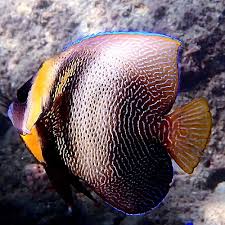The Presence of Dragons in Famous Chinese Artworks

Dragons are an integral part of Chinese culture, symbolizing power, strength, good fortune, and natural elements. Over thousands of years, the dragon has become a prominent figure in Chinese art, appearing in a wide range of artistic mediums, from ancient ceramics to intricate paintings, sculptures, and textiles. The dragon’s representation is not only central to Chinese mythology but also to its art, as it plays a significant role in communicating values, beliefs, and cultural practices. In this article, we will explore the appearance of dragons in some of the most famous Chinese artworks, highlighting their symbolism, meaning, and the ways in which they have shaped the artistic heritage of China.
The Dragon in Chinese Art: A Symbol of Power and Protection
In Chinese mythology, the dragon is revered as a symbol of power, wisdom, and good fortune. Unlike the fierce, often destructive dragons seen in Western mythology, the Chinese dragon is considered a benevolent creature that controls the elements and ensures harmony in the world. The dragon’s symbolism in art typically reflects these qualities, serving as a protector of people, a bringer of rain for crops, and a symbol of imperial power.
The dragon in Chinese art is often depicted as a long, serpentine creature with a scaly body, antler-like horns, sharp claws, and a face that resembles that of a camel or ox. This unique depiction of the dragon reflects its importance as a creature that transcends the boundaries of the natural world, embodying both the forces of nature and divine power.
The Dragon in Ancient Chinese Ceramics
One of the earliest and most prominent artistic depictions of dragons in China can be found in ancient ceramics. During the Tang Dynasty (618-907 AD) and Song Dynasty (960-1279 AD), the dragon was frequently used as a motif on pottery and porcelain, especially in royal or ceremonial pieces.
In particular, blue and white porcelain became a hallmark of Chinese craftsmanship, with intricate dragon designs adorning vases, plates, bowls, and other decorative items. These ceramics were often commissioned by emperors or wealthy patrons to celebrate the emperor’s power or to bring good luck and prosperity to the household.
A notable example of a famous Chinese ceramic featuring a dragon is the “Dragon and Phoenix” vase, a rare and beautiful example of imperial craftsmanship. The vase depicts two dragons in pursuit of a flaming pearl, symbolizing the emperor’s quest for knowledge and wisdom. The phoenix, a symbol of the empress, appears alongside the dragons, emphasizing the harmony between the imperial couple and the balance of yin and yang. This ceramic piece encapsulates the harmony and power that the dragon symbolizes in Chinese art, as well as its connection to the imperial family.
Dragons in Traditional Chinese Paintings
In traditional Chinese ink paintings, the dragon frequently appears as a central figure, conveying themes of imperial authority, prosperity, and the connection between the heavens and the earth. One of the most famous examples of dragon imagery in Chinese painting is the work of the legendary artist Zhang Daqian, who is known for his depictions of dragons in a dynamic and vibrant style.
In “Nine Dragons”, a famous work by the artist Chen Rong during the Song Dynasty, the dragon takes center stage, with nine serpentine dragons swirling across the paper, each representing different natural elements and cosmic forces. The work showcases the power and majesty of the dragon, whose form seems to move and change as it weaves through the swirling clouds and waves.
Dragons are often depicted in a fluid, almost abstract manner, their bodies bending and twisting as they engage with the forces of nature, such as wind, water, and fire. The dragon’s interaction with these elements represents its mastery over nature and its role in maintaining the balance of the universe.
The “Longma” painting (which translates to “Dragon Horse”) is another famous depiction of the dragon in traditional Chinese art. In this work, a powerful dragon is merged with the image of a horse, embodying the duality of the dragon’s ability to both ride and control the forces of nature. This fusion of animals symbolizes the dragon’s dominion over both the celestial and terrestrial realms.
The Dragon and the Imperial Family: The Forbidden City
The Forbidden City, the imperial palace in Beijing, is another prime example of the dragon’s presence in Chinese art. As the residence of Chinese emperors for almost five centuries, the Forbidden City is filled with artwork that incorporates dragon imagery, serving as symbols of imperial power and divine authority. The emperor was seen as the Son of Heaven, and the dragon was considered to be the emperor’s symbolic animal. As such, the dragon is frequently represented in the architecture, furniture, and decoration of the palace.
The Imperial Dragon Throne, for instance, was carved with intricate designs of dragons, often surrounded by clouds, waves, and flames. These motifs symbolize the emperor’s command over the heavens and the earth, as well as his role in maintaining harmony within the empire. The dragon’s presence in the Forbidden City also signifies the emperor’s status as a divine ruler who is directly connected to the celestial forces.
The famous Nine-Dragon Screen in the Forbidden City is another iconic piece of Chinese art. This large ceramic wall mural features nine powerful dragons, each depicted in a different pose, emphasizing the diversity and strength of the dragon. The Nine-Dragon Screen is not only an example of Chinese ceramic artistry but also an important symbol of imperial authority, showcasing the emperor’s dominion over the elements and his direct connection to the divine.
Dragons in Chinese Textiles and Embroidery
Chinese textiles and embroidery have long been a canvas for the depiction of dragons, especially during the imperial era. Emperors and high-ranking officials would often wear clothing adorned with embroidered dragons, which were seen as symbols of status, power, and protection. The use of dragons in textiles was particularly prominent during the Ming and Qing Dynasties, when intricate designs were used to adorn robes, banners, and other ceremonial garments.
One famous example of a dragon in Chinese textile art is the dragon robe worn by the emperor. This robe, known as a “longpao”, typically features a dragon with five claws (reserved for the emperor), symbolizing supreme power and authority. The robe was often made from luxurious silk and embroidered with gold thread, making it a work of art in its own right.
The “Dragon and Phoenix” motif, often seen in royal textiles, symbolizes the harmonious relationship between the emperor and empress, as well as the balance of male and female energies. The dragon is typically shown in pursuit of a pearl, symbolizing the emperor’s wisdom, while the phoenix represents the empress’s nurturing and protective qualities.
Dragons in Chinese Sculpture and Architecture
Dragons also feature prominently in Chinese sculpture and architecture, where they serve as guardians, protectors, and symbols of imperial authority. The Summer Palace in Beijing, for example, is home to numerous dragon sculptures that symbolize the emperor’s connection to the divine forces of nature.
One of the most famous dragon sculptures is the Dragon Column at the Temple of Heaven, which was used during imperial ceremonies to offer sacrifices to the heavens. This intricately carved column features a coiled dragon at its base, symbolizing the emperor’s connection to the celestial realm.
Additionally, the dragon gate of the Xi’an City Wall is a key example of how dragons are used in architecture to signify protection and strength. The dragon gate is intricately carved, with dragons swirling around the entrance, guiding visitors and protecting the city from harm. The dragon’s presence in these architectural elements emphasizes its role as a guardian and protector of the emperor and the empire.
Conclusion: The Enduring Legacy of Dragons in Chinese Art
The dragon’s presence in Chinese art spans thousands of years, from ancient ceramics and textiles to imperial palaces and monumental sculptures. As a symbol of power, protection, and divine authority, the dragon has shaped not only the artistic traditions of China but also its cultural identity. From the earliest depictions of dragons on pottery to the intricate designs in the Forbidden City, the dragon has remained a constant presence in Chinese art, representing the balance between nature, the cosmos, and the emperor’s rule.
The enduring legacy of the dragon in Chinese art speaks to its deep cultural significance and its role as a symbol of harmony and strength. As both a divine creature and a protector of the people, the dragon continues to captivate artists and audiences alike, maintaining its place as one of the most powerful and revered symbols in Chinese culture. Through its depictions in famous artworks, the dragon serves as a timeless reminder of China’s rich artistic heritage and its deep connection to the forces of nature.

